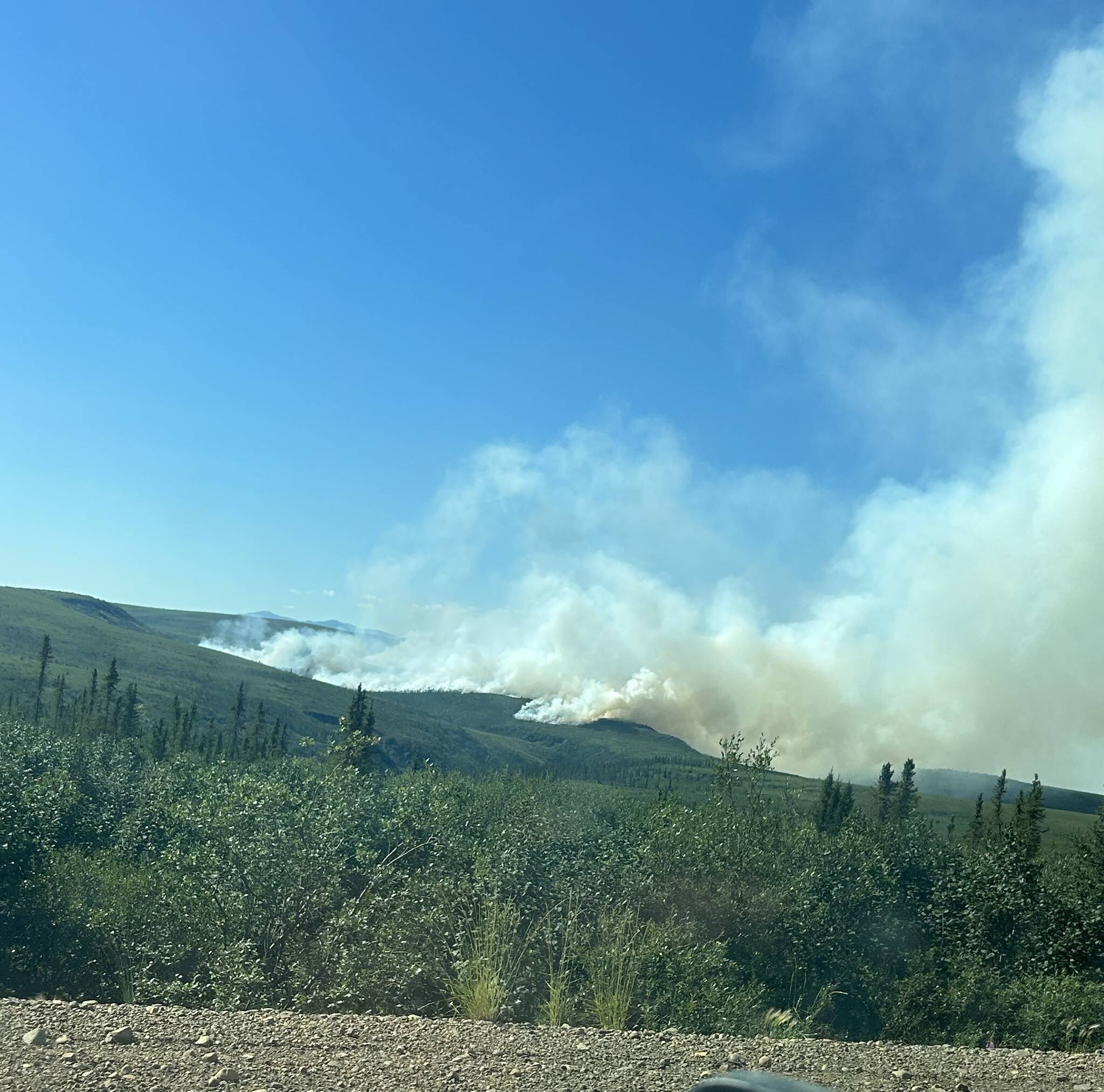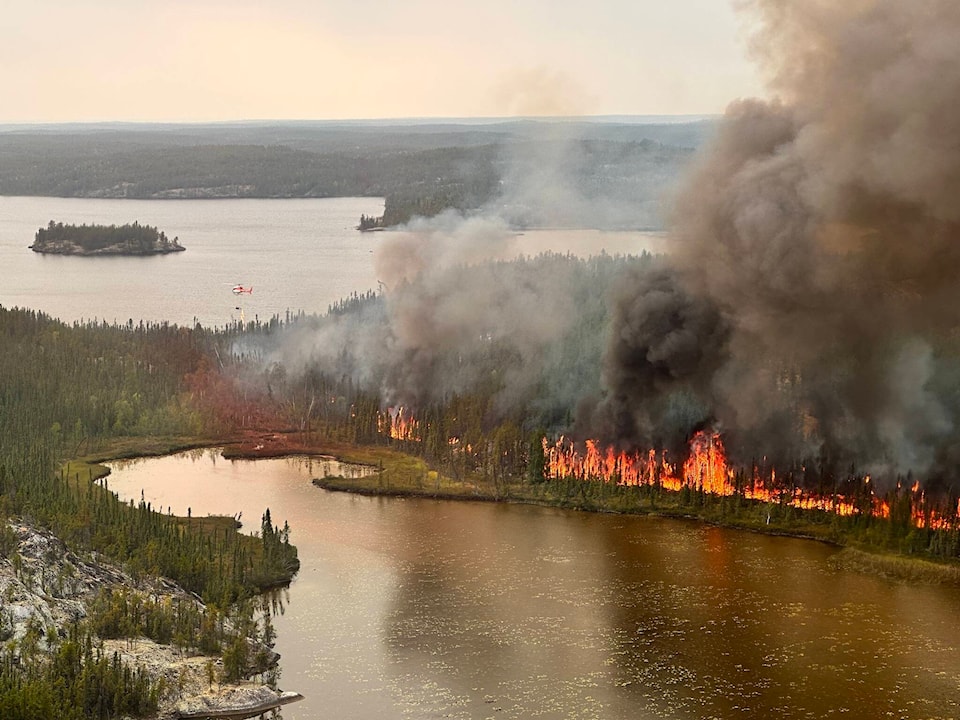To say that this yearSAΙζΦ ”Α ”¥ΪΟΫôs wildfire season was off the charts would perhaps be the understatement of 2023.
More area burned in 2023 than in any other year in the NWT, forcing evacuations in multiple communities, sometimes twice.
The first major reported blaze occurred on May 5 with what the Department of Environment and Climate Change (ECC) called SS002-03. It was first assessed at 22 hectares and was burning 16 km west of Fort Smith, just past Bell Rock. It was classified as out of control that day with the cause being an escaped burn pile.
But the worst was yet to come.
May 14
The blaze that really started getting people worried ignited on the KSAΙζΦ ”Α ”¥ΪΟΫôatlSAΙζΦ ”Α ”¥ΪΟΫôodeeche First Nation (KFN) on this day. Flames were first reported on the reserve at around noon and residents of Old Village were advised to keep watch, but the fire quickly grew to the point where they were evacuated around an hour later.
A video posted to the reserveSAΙζΦ ”Α ”¥ΪΟΫôs Facebook page featured KFN Chief April Martel narrating and telling of how the fire had expanded from three hectares at 11:23 a.m. to 15 hectares by early afternoon.
Martel then posted another video notifying KFN members that the emergency siren was going to be activated. Everyone was asked to meet at the Aurora Ford Arena in Hay River, which was set up as the initial evacuation centre. Martel said the town was assisting in those efforts.
Just before 2 p.m., the reserve advised in a Facebook post that residents should gas up their vehicles at the Ehdah Cho Store as soon as possible. People were also urged to pack emergency bags and meet at the ECC building at the beginning of the reserve highway.
NWT Fire sent out a tweet just before 3 p.m. stating that the blaze started at Portage Creek and suspected it was human-caused. West winds pushed the fire and smoke away from the reserve. However, later in the day, it was expected that northerly and easterly winds would direct the fire and smoke towards the community.
The Town of Hay River posted that there was no immediate danger to the town itself at around 3:30 p.m. Sunday afternoon, but updates would be provided later in the day.
May 14 (overnight)
Things began to really get out of control overnight in Hay River and KFN as many residents from both communities were told to head for Yellowknife.
Martel wrote on social media that she could hear explosions coming from the reserve. Meanwhile, the GNWT stated that flames were believed to have jumped the Hay River itself on the western side of the town, and noted that community members had reported flames reaching Vale Island, near the graveyard.
Firefighters were forced to retreat and the size of the fire wasnSAΙζΦ ”Α ”¥ΪΟΫôt known in the chaotic early hours of that morning.
The Town of Hay River informed all residents to leave the community as of 11 p.m. May 14. Revealing how quickly the out-of-control wildfire was moving, the municipality posted online just an hour and 15 minutes earlier that the fire was being monitored closely but there was no alert in place for the town, although the municipality encouraged residents to review emergency preparedness literature.
May 15 (early afternoon)
NWT Fire updated the situation just after noon on May 15 with the belief that as many as 15 buildings may have been damaged as a result of the blaze. No damage had been reported in Hay River, though the Hay River Fire Department was busy overnight putting out spot fires. Those fires were a result of embers jumping the river, according to the town.
Martel stated on social media that security was posted at the entrance to the reserve and crews from both RoweSAΙζΦ ”Α ”¥ΪΟΫôs Construction and Carter Industries building a fire guard to protect as much of the community as possible. Martel said the guard would be extended all the way around the Dene Wellness Centre.
She also stated that a bus was set to leave Fort Providence for Yellowknife at 11:15 a.m. with another bus at the ECC building departing at 11:45 a.m. to pick up those in Enterprise. It was scheduled to stop in Fort Providence to accommodate anyone who was still there and head north to Yellowknife.
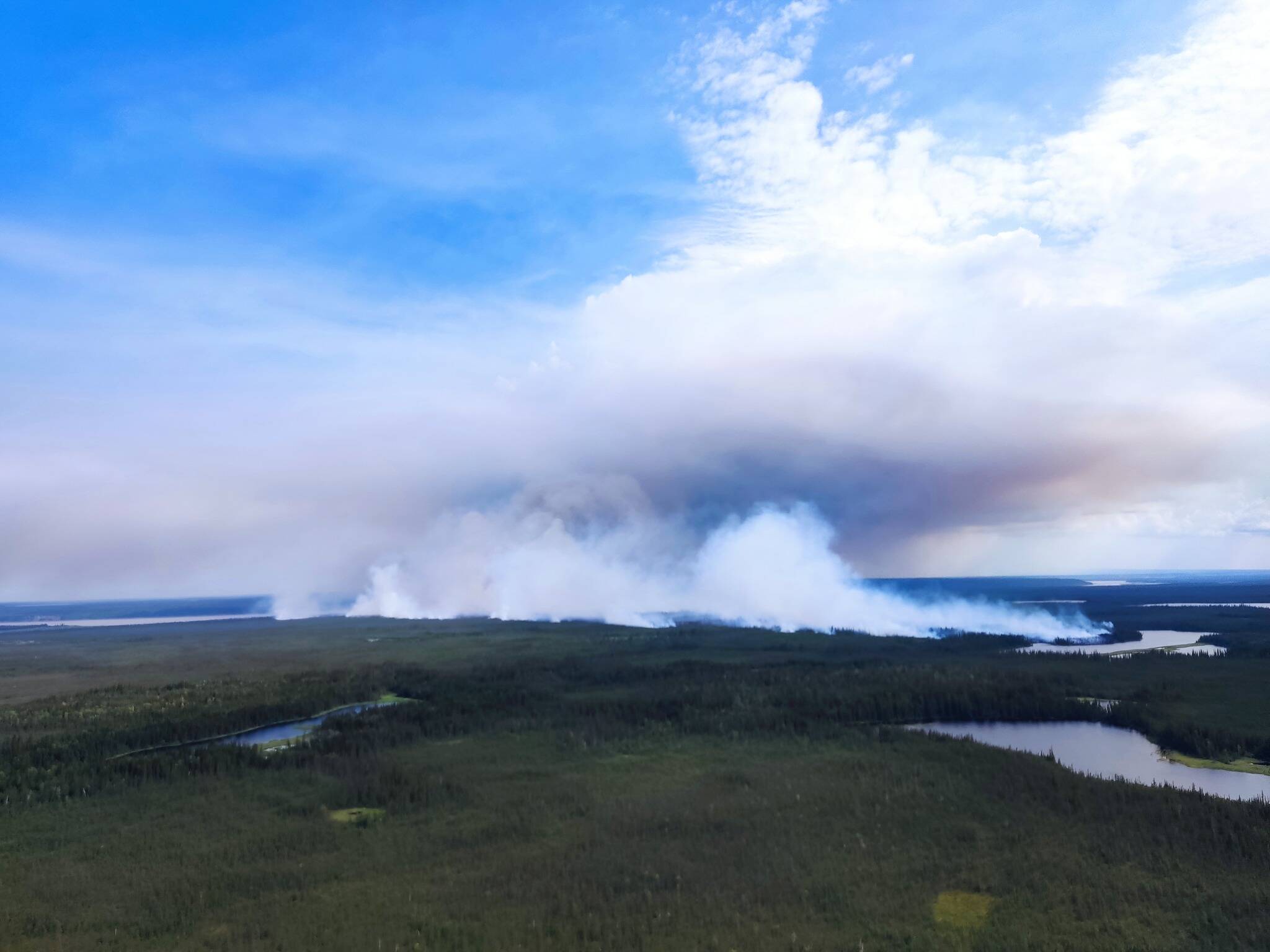
May 19
Yellowknife did what it could to try to make the evacuees from Hay River and KFN feel at home. Businesses such as the Racquet Club opened their doors for those looking to get in a workout or a shower SAΙζΦ ”Α ”¥ΪΟΫî free of charge SAΙζΦ ”Α ”¥ΪΟΫî while Home Base Youth Centre added extra beds and invited youth from both communities to drop in to hang out.
The city offered parking passes for evacuees and those who evacuated with RVs or trailers were able to use pump-out stations.
The generosity of Northerners was on full display within the first week of the evacuation as United Way NWT managed to raise $360,000 in less than seven days. The original goal was $300,000, according to David Connelly, chair of United Way NWTSAΙζΦ ”Α ”¥ΪΟΫôs emergency response committee.
Among the donations was $150,000 from the GNWT, $25,000 each from the Nunavut and Yukon governments along with an anonymous $100,000 donation. Companies such as Teck Resources, Rio Tinto and Northwestel gave between $2,500 and $25,000 while the Union of Northern Workers pumped in $30,000, which was matched by the Public Service Alliance of Canada.
May 25
Residents of Hay River were able to start returning home after the evacuation emergency order for the town was downgraded to an alert.
The reopening was done in two parts: part one was the resumption of essential services, involving inspections and assessments of critical infrastructure, starting maintenance on buildings and equipment and allowing essential staff to return before the town reopened.
Health services, pharmacies, emergency services, utilities, the Hay River Merlyn Carter Airport, fuel services, schools, grocery stores and hotels were all part of the first phase. Those who returned home were asked to inspect their property. The town suspected that no repairs were needed to homes, but residents were being encouraged to ensure interior and exterior surfaces are clean, along with air handlers.
Part two of the return was for those who were in assisted living facilities, in long-term care, those who need chronic illness treatment or those living in public shelters. Their return would happen once the evacuation alert had been fully lifted and community health services had been restored.
Air Tindi announced it would offer free flights to anyone who wanted to return to Hay River between May 26 and June 1.
But while Hay River residents were able to come home, those from KFN were still waiting as the situation remained risky.
SAΙζΦ ”Α ”¥ΪΟΫ€ItSAΙζΦ ”Α ”¥ΪΟΫôs just too dangerous,SAΙζΦ ”Α ”¥ΪΟΫù said Martel in an interview on May 25. SAΙζΦ ”Α ”¥ΪΟΫ€There are hot spots all over and crews are still working on the fire. We have homes that have been destroyed or damaged by fire or smoke. We havenSAΙζΦ ”Α ”¥ΪΟΫôt been able to do a proper assessment, we have power lines down, no phone service SAΙζΦ ”Α ”¥ΪΟΫî itSAΙζΦ ”Α ”¥ΪΟΫôs not safe.SAΙζΦ ”Α ”¥ΪΟΫù
A post on social media outlined what needed to be done before any KFN members could return. It included getting utilities back up and running, replacing power lines and poles, an environmental hazard assessment, assessments on homes and road repairs due to heavy equipment impacts.
The Ehdah Cho Store also required a thorough cleaning to deal with potential toxic waste, the post added.
KFN members who lived in town were allowed to go home and other members could join them if there was room. Members could also stay with family or friends in town, but hotel stays, gas and food for those going home wouldnSAΙζΦ ”Α ”¥ΪΟΫôt be covered by KFN unless it had been pre-authorized.
June 8
The wildfire burning near Saamba KSAΙζΦ ”Α ”¥ΪΟΫôe began threatening the community.
It had grown to 265,000 hectares by that time and sat around 10 km outside of the community. Air tankers completed drops on priority targets near the community to attempt to slow growth at the fireSAΙζΦ ”Α ”¥ΪΟΫôs front, as visibility allowed. Structure protection involved continuing to set up and maintain sprinklers to try to stop flames from igniting should the blaze reach the community.
Several members of the community had safely evacuated to Fort Simpson several days before the fire began to bear down. Nahendeh MLA Shane Thompson said on June 2 that 75 people had made it to the village.
SAΙζΦ ”Α ”¥ΪΟΫ€Evacuees were scheduled to stay in the Fort Simpson recreation centre in the gym and arena,SAΙζΦ ”Α ”¥ΪΟΫù he said. SAΙζΦ ”Α ”¥ΪΟΫ€The village had set up the evacuation centre full of cots. However, almost all evacuees have found other places to stay with family, friends or other locations in the community.SAΙζΦ ”Α ”¥ΪΟΫù
A few hundred kilometres away, the good news was that members of KFN were able to return home after fire crews got control of the flames.
It was determined that more than a dozen buildings, including the KFN band office, were no longer inhabitable due to damage from smoke and ash.
Alex Gresl, KFNSAΙζΦ ”Α ”¥ΪΟΫôs chief executive officer, said many people had lost their homes along with everything they owned.
SAΙζΦ ”Α ”¥ΪΟΫ€This yearSAΙζΦ ”Α ”¥ΪΟΫôs wildfires were devastating all over, including for members of the Hay River Reserve,SAΙζΦ ”Α ”¥ΪΟΫù he said. SAΙζΦ ”Α ”¥ΪΟΫ€Through the kindness of community, they have received donations for clothes, kitchenware and beds, but still need help.SAΙζΦ ”Α ”¥ΪΟΫù
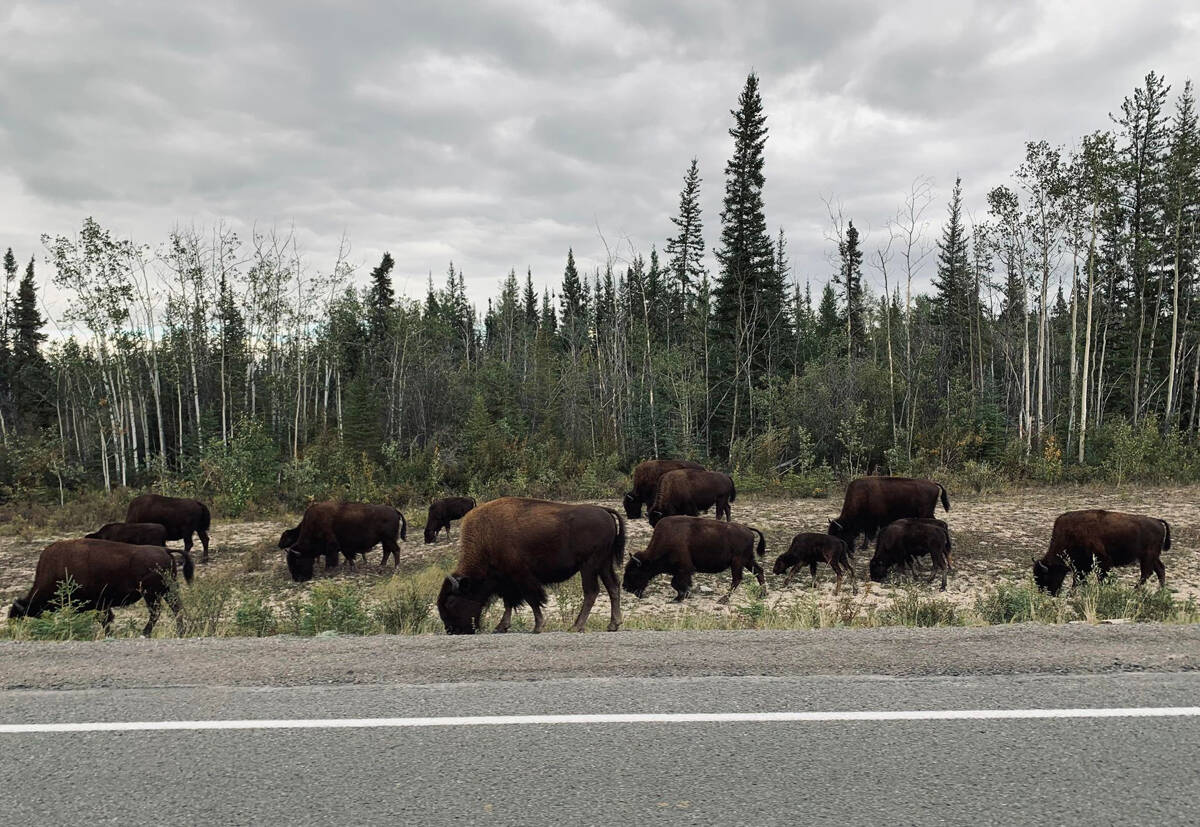
June 29
Wekweeti was ordered to evacuate as a fire, known as ZF009, threatened to overrun the area.
The blaze, which was caused by a lightning strike, started a few kilometres outside the community. Two other fires, ZF013 and ZF017, were being monitored. Those two fires were located on the other side of Snare Lake.
The GNWT announced that flights were being co-ordinated to bring all residents to Yellowknife, but residents were able to return home on July 4 after the fires were brought under control.
July 10
A wildfire burning near Tulita had grown to an estimated 14,000 hectares based on satellite detection and sat approximately 9 km from the community, according to NWT Fire. The blaze caused the loss of cabins at 12 Mile.
As well, the wildfire in the Beaufort Delta known as EV012 grew to around 750 hectares and reached the Dempster Highway around 30 km from the border with Yukon. NWT Fire stated that it was protecting cabins at Midway Lake and trying to stop the blaze from growing and threatening Fort McPherson.
The town of Inuvik was placed on evacuation notice as a result.
July 15
The danger of the wildfires became all too real that day when we learned of the death of Adam Yeadon from Fort Liard.
Yeadon, 25, died from injuries he sustained while battling a blaze near his home community. Officials with the GNWT released few details about his death, but itSAΙζΦ ”Α ”¥ΪΟΫôs believed he was struck by a falling tree.
His father, Jack Yeadon, told of how his son tried to join the fire crews at the age of 17 when he jumped on a flight to Fort Simpson, but was told he was too young.
Adam Yeadon started as an on-call firefighter before eventually making his way onto a full-time crew. His death was the first recorded among NWT wildland firefighters since 1971, when six fatalities were recorded.
July 21-22
The Behchoko-Yellowknife wildfire, known as ZF015, began to threaten homeowners and cabin owners on Highway 3.
An alert notice was broadcast just after 10 p.m. that evening telling those living between kilometre 276 and kilometre 290 on the highway to evacuate to either the capital or to Behchoko.
NWT Fire indicated that following a reconnaissance flight over the wildfire burning close to the highway, it was expected to reach the highway itself overnight. Sprinklers were set up at all structures on that particular stretch of highway and they would run all night to try to reduce the likelihood of any damage.
That evacuation was extended to kilometre 256 on Highway 3 on July 22 as the fire continued its movement toward the highway.
July 24-26
The wildfire eventually forced the full evacuation of Behchoko on July 24.
The order was published just before 6 p.m. that evening by Pushp Seth, the communitySAΙζΦ ”Α ”¥ΪΟΫôs senior administrative officer. In it, Seth stated that residents must evacuate and that the muster station was the Khon Go Cho Sportsplex.
NWT Fire indicated that ignition operations to try to stop the spread of the fire had been successful to that point, though plans to continue the Stagg River ignition line didnSAΙζΦ ”Α ”¥ΪΟΫôt happen. Cabins and homes near Highway 3 were being protected by sprinklers.
An update from NWT Fire on July 25 indicated that gusting winds swirling all day in the area pushed the fire until flames hit the Behchoko Access Road at the Frank Channel. Seth told everyone still in Rae to evacuate toward Bay Island. That was at around 9 p.m.
NWT Fire warned people to be ready for some property loss and the extent of the loss wouldnSAΙζΦ ”Α ”¥ΪΟΫôt be known until crews could safely check things out.
Tlicho Grand Chief Jackson Lafferty took it upon himself to attempt to get those who were still in the area out of harmSAΙζΦ ”Α ”¥ΪΟΫôs way by flying two planes into Edzo Airport and imploring people to make their way there to be flown out.
In a post to social media from Edzo Airport in Behchoko, Lafferty said he wanted people to head to Yellowknife.
SAΙζΦ ”Α ”¥ΪΟΫ€Right around Edzo, thereSAΙζΦ ”Α ”¥ΪΟΫôs still some people,SAΙζΦ ”Α ”¥ΪΟΫù he said. SAΙζΦ ”Α ”¥ΪΟΫ€This is an emergency (and) we should have everyone on a plane.SAΙζΦ ”Α ”¥ΪΟΫù
In the video, ashes could be seen falling from the sky and Lafferty said things were only getting worse.
SAΙζΦ ”Α ”¥ΪΟΫ€ItSAΙζΦ ”Α ”¥ΪΟΫôs critical now in Behchoko,SAΙζΦ ”Α ”¥ΪΟΫù he said. SAΙζΦ ”Α ”¥ΪΟΫ€Lives are at stake here, itSAΙζΦ ”Α ”¥ΪΟΫôs life or death. We need to get out ASAP.SAΙζΦ ”Α ”¥ΪΟΫù
When crews were able to get into Rae, they found three homes had been lost after the blaze had blown up overnight, stated NWT Fire. Edzo hadnSAΙζΦ ”Α ”¥ΪΟΫôt been compromised, but the threat was very much there.
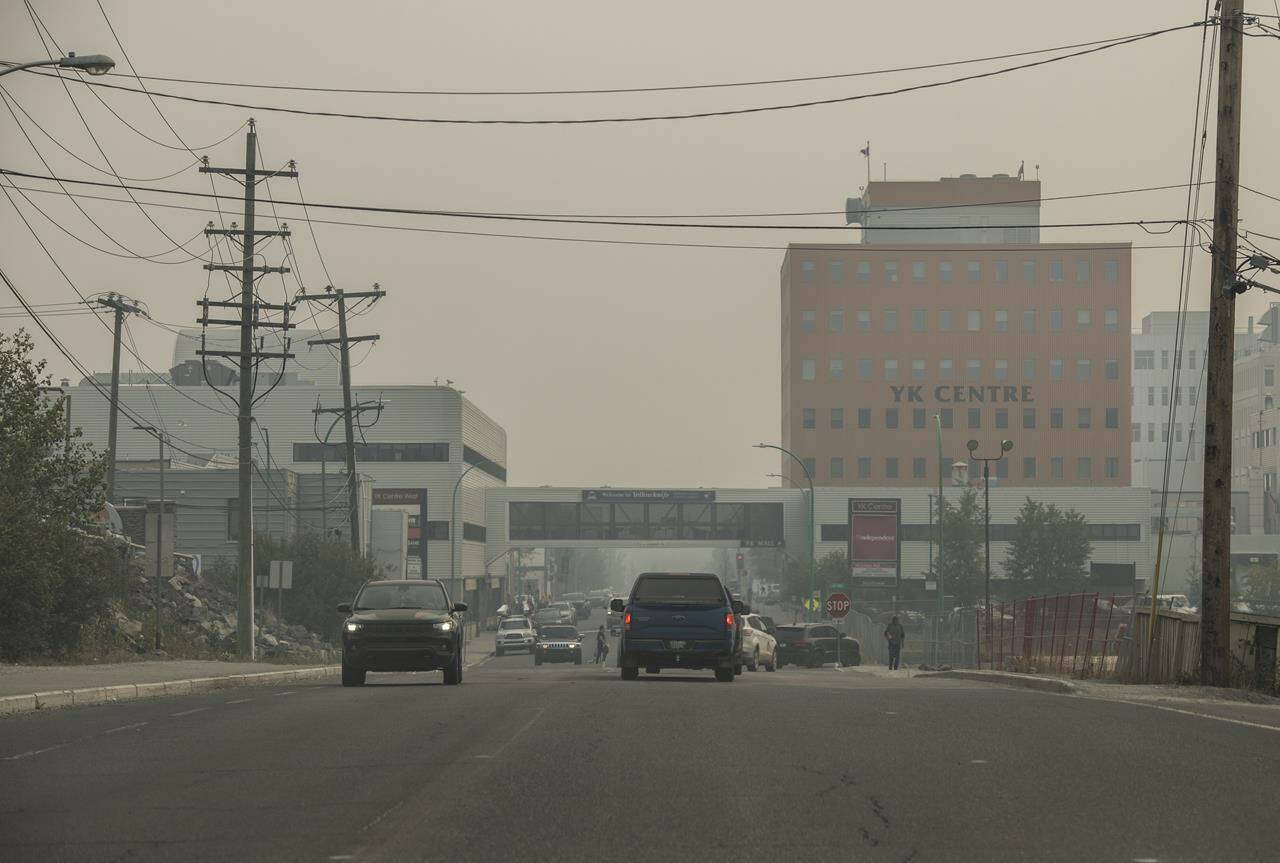
Aug. 1
Evacuees from Edzo were allowed to return home after fire crews were able to stop the wildfire from crossing the Frank Channel. The evacuation order was downgraded to an alert.
Mike Westwick, wildfire information officer with the Department of Environment and Climate Change, said a total of 19 structures had been confirmed lost, all within Rae and along Highway 3. Three others had been damaged, he added.
Power was restored to Edzo as of that morning, while power to homes in Rae was expected to be restored by the evening, but that wasnSAΙζΦ ”Α ”¥ΪΟΫôt a guarantee, according to Seth.
Aug. 3
Residents of Rae were allowed to start coming home, but one family was returning to nothing left but the foundation of their house.
Walter and Beatrice Naedzo, who have four children, lost their home in the enormous blaze and they were trying to find another place to live.
Walter Naedzo said their preference was to go back to Rae to be near relatives.
SAΙζΦ ”Α ”¥ΪΟΫ€But now weSAΙζΦ ”Α ”¥ΪΟΫôll take whatever that comes our way, maybe even a home (cooked) meal everywhere, if we have to,SAΙζΦ ”Α ”¥ΪΟΫù said Beatrice.
She said their home was unique and built from scratch by six members family without any help from others. They had given the house a fresh paint of coat just two years ago.
Aug. 4
While people were heading home, cabin owners and homeowners on Highway 3 between kilometres 284 and 306 were ordered to evacuate as the Behchoko-Yellowknife wildfire began threatening that area.
The blaze wasnSAΙζΦ ”Α ”¥ΪΟΫôt expected to reach Highway 3 that evening, but with wind changes frequently occurring, officials were taking no chances. The evacuation order lasted one day. It was downgraded to an alert the following day as crews were able to hold the fire.
Aug. 12-14
The wildfire became a growing threat to the Yellowknife area on Aug. 12 as NWT Fire issued an evacuation alert to those living in nearby North Prosperous Lake, North Prelude Lake and River Lake.
Winds gusting to as much as 45 km/h were expected to push the Ingraham Trail fire to the south and east.
It was upgraded to an evacuation order the next day as winds began shifting to the northwest sooner than anticipated. Flames werenSAΙζΦ ”Α ”¥ΪΟΫôt expected to reach the Ingraham Trail or any territorial parks, but officials told residents to leave while they still could.
Cabin owners and homeowners on Highway 3 between kilometres 284 and 306 were ordered to evacuate that same day as the Behchoko-Yellowknife fire breached established fire lines to the east. They were told to head to Yellowknife as it was still deemed out of danger.
The evacuation order on Highway 3 was extended to those living up to kilometre 329 as the breach expanded to the east and had reached Boundary Creek. Those evacuees were also told to head for Yellowknife.
Meanwhile, the Wood Buffalo complex blazes had grown to more than 400,000 hectares by this time and that meant the Town of Fort Smith had to be evacuated.
The order was issued by the municipalitySAΙζΦ ”Α ”¥ΪΟΫôs protective services department just before 4 p.m. on Aug. 12, following a recommendation from Parks Canada due to forecasted wildfire behaviour.
Residents were given an eight-hour time frame in which to leave the area, meaning everyone had to be out by midnight. Those without vehicles were told to meet at the Fort Smith Recreation Centre, where an evacuation centre was set up, while those who had the means to leave were advised to head to Hay River and go to the townSAΙζΦ ”Α ”¥ΪΟΫôs recreation centre.
As it turned out, that was only a short-term solution as Hay River and KFN had to be evacuated for a second time in 2023 as wildfires began to threaten the area on Aug. 14. Residents from both communities were told to make their way to the Hay River Merlyn Carter Airport to be flown out.
Aug. 14
It was YellowknifeSAΙζΦ ”Α ”¥ΪΟΫôs turn to start ramping up its preparations for the peril on its doorstep.
Mayor Rebecca Alty called an emergency meeting of city council to declare a state of emergency for residents. The declaration allowed the city to implement all procedures considered necessary to protect the city from wildfires. For example, the declaration would enable the municipal government to order contractors to pull their equipment off of jobs and to assist with efforts to stop fires from entering Yellowknife.
The GNWT didnSAΙζΦ ”Α ”¥ΪΟΫôt follow suit SAΙζΦ ”Α ”¥ΪΟΫî Shane Thompson, minister of Environment and Climate Change, said the territorial government felt it unnecessary to declare a state of emergency because there were adequate resources to combat the fires and such a declaration could cause panic.
Aug. 16
The GNWT, however, changed course two days later and issued an evacuation order for Yellowknife, Ndilo, Dettah and the Ingraham Trail effective at 6 p.m. Thousands of residents began the process of driving out, if they could, toward Alberta with no word on where they would end up. A fuel station was set up at the Steen River pullout in northern Alberta for those heading south.
Evacuation flights to Calgary started on Aug. 17 with Sir John Franklin High School being used as the muster point for transportation to Yellowknife Airport. Air Canada and WestJet also adjusted prices for those who were flying out by commercial means.
Everyone had to be out by Aug. 18 at noon, but not everyone left and those who stayed would not be forced to go.
Reception centres for evacuees who drove out of the Yellowknife area were eventually set up in Calgary, Fox Creek, Lac la Biche, Red Deer, Valleyview, Whitecourt, Fort Vermillion and Edmonton. Some evacuees also flew to Whitehorse, Vancouver and Winnipeg.
Those evacuated from the South Slave were set up in Peace River and High Level; those who were leaving Hay River by the 18th were flown to Lloydminster. Centres in Leduc, Fort McMurray, St. Albert and Grande Prairie were already full. Evacuees from Kakisa and Jean Marie River were told to head to Fort Simpson.
Free use of campsites in Alberta was offered to those who brought trailers.
Aug. 21
The GNWT announced that those who were put out of work for seven days or longer would be eligible to receive a $750 stipend.
Residents who applied needed to be registered as an evacuee with the GNWT; provide proof of employment income; provide a declaration that they have lost income and have had no financial assistance from their employer; and supply adequate information for the GNWT to provide a T4A slip.
Evacuees on income assistance who had direct deposit could also receive $500 per person or $1,000 per family. Service Canada was also reportedly fast-tracking Employment Insurance applications.
Aug. 22
Alty called on the GNWT and federal government to provide more disaster relief for evacuees.
She said the municipality and GNWT had been working together to plan what needs to be done since Aug. 18.
SAΙζΦ ”Α ”¥ΪΟΫ€Disaster financial assistance is certainly needed in our territory,SAΙζΦ ”Α ”¥ΪΟΫù Alty added.
Finance Minister Caroline Wawzonek noted the GNWT had a working group established to maintain communications with supply chains. She said the GNWT was looking at whether a subsidy would be worthwhile to offset costs, but was still determining if that was necessary.
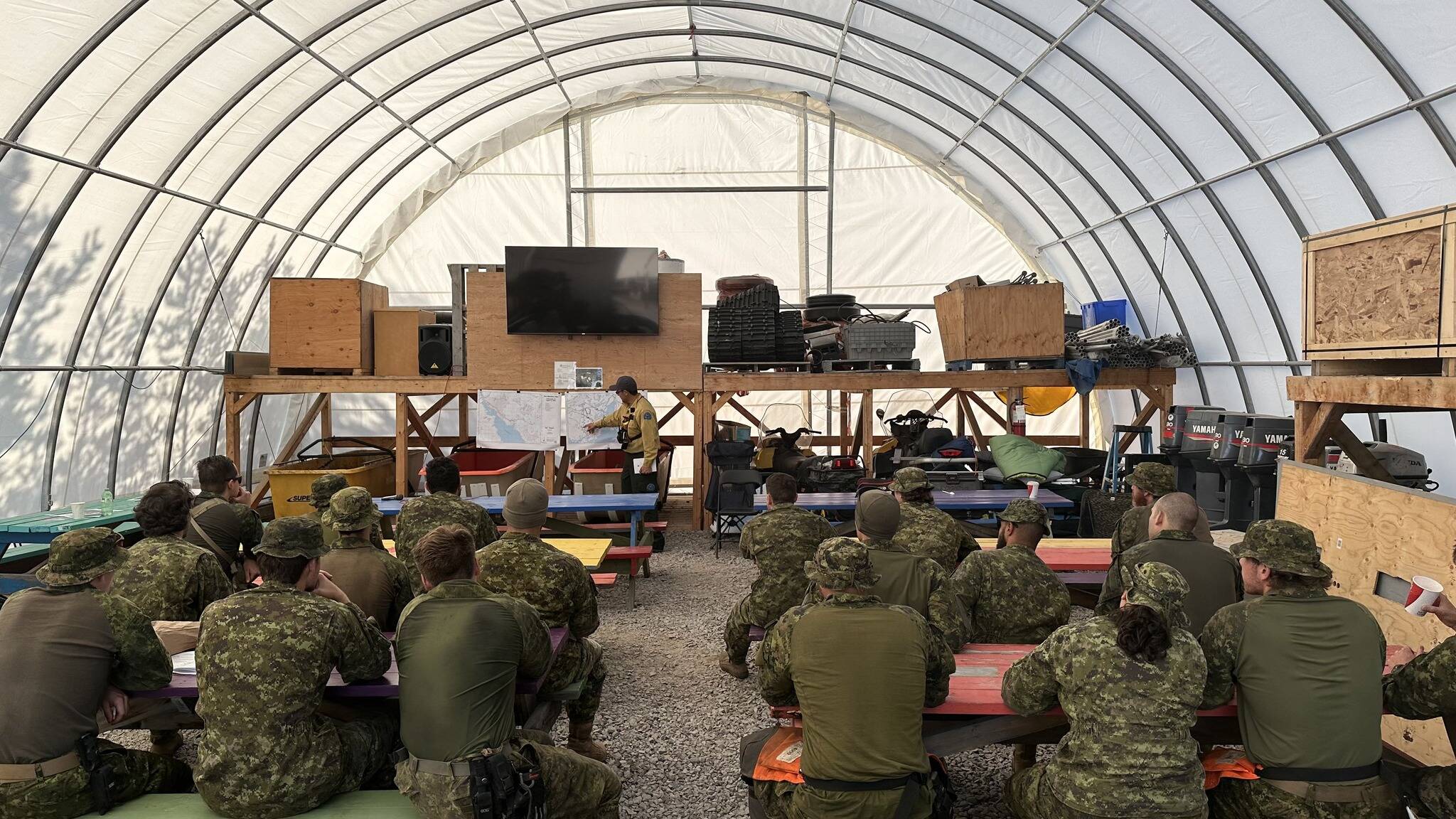
Aug. 23
Some residents of Enterprise were able to get a glimpse of just what the community looked like after the Hay River-Kakisa wildfire ripped through it. It was estimated that close to 90 per cent of the hamlet had been destroyed by the fire.
Resident Tammy Neal told SAΙζΦ ”Α ”¥ΪΟΫ that she found out more than 30 homes and six businesses were lost.
SAΙζΦ ”Α ”¥ΪΟΫ€Only about 13 homes still stand along with maybe three businesses,SAΙζΦ ”Α ”¥ΪΟΫù she said.
NealSAΙζΦ ”Α ”¥ΪΟΫôs family, friends and neighbours were SAΙζΦ ”Α ”¥ΪΟΫ€coping and grievingSAΙζΦ ”Α ”¥ΪΟΫù after learning their homes were destroyed in the blaze.
SAΙζΦ ”Α ”¥ΪΟΫ€I donSAΙζΦ ”Α ”¥ΪΟΫôt think we are really managing yet,SAΙζΦ ”Α ”¥ΪΟΫù she said. SAΙζΦ ”Α ”¥ΪΟΫ€We are coping and grieving, feeling for our Enterprise friends who also lost their homes and who are displaced. ISAΙζΦ ”Α ”¥ΪΟΫôm also in shock and saddened for our community that is only recognizable by the few homes and businesses that are left standing.SAΙζΦ ”Α ”¥ΪΟΫù
SAΙζΦ ”Α ”¥ΪΟΫ€I believe everyone needs to hold on to hope and faith that we will get through this once weSAΙζΦ ”Α ”¥ΪΟΫôve all had time to process the reality of this surreal situation and figure out what the next steps are,SAΙζΦ ”Α ”¥ΪΟΫù she continued.
Aug. 28
The news everyone in Yellowknife, Ndilo, Dettah and the Ingraham Trail was waiting for finally came as NWT Fire announced that the Behchoko-Yellowknife blaze was finally declared as being held.
SAΙζΦ ”Α ”¥ΪΟΫ€This is awesome news,SAΙζΦ ”Α ”¥ΪΟΫù said Sheila Bassi-Kellett, YellowknifeSAΙζΦ ”Α ”¥ΪΟΫôs city manager. SAΙζΦ ”Α ”¥ΪΟΫ€But it doesnSAΙζΦ ”Α ”¥ΪΟΫôt mean the risk is gone yet.SAΙζΦ ”Α ”¥ΪΟΫù
Bassi-Kellett said the city was working with the GNWT as the government developed a re-entry framework.
She noted there was no fire damage in the city.
Essential workers, notably those in public works and health care services, would return home first to provide support for re-entry.
SAΙζΦ ”Α ”¥ΪΟΫ€WeSAΙζΦ ”Α ”¥ΪΟΫôre going to have them at a basic level, itSAΙζΦ ”Α ”¥ΪΟΫôs not going to be complete and itSAΙζΦ ”Α ”¥ΪΟΫôs not going to be pretty,SAΙζΦ ”Α ”¥ΪΟΫù Bassi-Kellett said.
After essential services were restored, the evacuation order could be lifted.
Emergency Management Organization (EMO) information officer Jay Boast said the city and GNWT were identifying what counted as essential services and contacting them.
NWT Health and Social Services Authority CEO Kimberly Riles said Stanton Territorial Hospital had begun identifying essential workers but had not started calling them back yet, aside from personnel needed to keep the emergency room operating.
Aug. 30
As plans for re-entry were being finalized, word came that some residents were planning to return and defy the protocols in place.
SAΙζΦ ”Α ”¥ΪΟΫ€The information received is that a group of people are planning to re-enter in the territory in as many as 50 vehicles from Alberta and that they will not stop for the checkpoints,SAΙζΦ ”Α ”¥ΪΟΫù stated Cpl. Matt Halstead, media relations officer with the NWT .
SAΙζΦ ”Α ”¥ΪΟΫ€Trying to return now puts you at risk. There have been extended highway closures due to active wildfire activity, poor visibility and there is a lack of emergency services to respond to a collision or medical emergency while people are in transit. Importantly, if you are not approved for re-entry, you will be turned away. Anyone who engages in activity that risks the safety of Department of Infrastructure staff or officers at the checkpoints, may face prosecution,SAΙζΦ ”Α ”¥ΪΟΫù he added.
Sept. 1
The wildfire threatening Hay River and KFN was set to take a possible turn for the worst as high winds threatened to send the blaze to the east and right in line with the town and reserve.
Kakisa was still not under any immediate threat from the fire, which remained 12 km southeast of the community. Westwick stated that good progress was being made on that side of the fire.
The City of Yellowknife published its re-entry date of Sept. 5 to very little fanfare on its website.
All critical workers were asked to be back in the city between Sept. 4 and 5. The list included health services, pharmacies, transportation, municipal/band critical services, airports, utilities, power, fuel services, child care providers, Indigenous Elder services and grocers.
Sept. 5
As those living in the North Slave began the trip home, there was one problem that could have been a major disruption.
A transport truck struck a power pole in Fort Providence roughly around noon that day, knocking power out for the entire community and the Big River Service Station, which was expected to be a key refuelling point for evacuees returning home.
Power was eventually restored and a big sigh of relief could be heard as far away as Meander River.
Sept. 8
The Town of Hay River released its re-entry plan and it was similar to YellowknifeSAΙζΦ ”Α ”¥ΪΟΫôs. It included staggered phases; essential services were brought back first, followed by residents shortly thereafter.
Sept. 11
Residents of Kakisa were allowed to return home as that evacuation order was downgraded to an alert.
A portion of the Wood Buffalo complex south of Fort Smith and closest to Fort Fitzgerald was considered under control. However, increased fire activity was observed along Highway 5.
Following the same model adopted by Hay River and used in Yellowknife, Fort SmithSAΙζΦ ”Α ”¥ΪΟΫôs planned re-entry would be completed in steps. The first requirement was for it to be safe enough for critical services such as , public service workers and service industry representatives who could support firefighting efforts.
Once the threat to the community had passed, structural protections would be removed. Then, essential services would be asked back, followed by the general population and then vulnerable populations. Residents were eventually allowed to return beginning on Sept. 18.
And so here we are. That was a brief summary of the wildest fire season on record in the NWT. We got through it together and itSAΙζΦ ”Α ”¥ΪΟΫôs something weSAΙζΦ ”Α ”¥ΪΟΫôll talk about for many years to come. It makes you appreciate what you have. But letSAΙζΦ ”Α ”¥ΪΟΫôs keep those who lost homes, cabins and other valuables in mind. And the late Adam Yeadon will also be in our thoughts.
